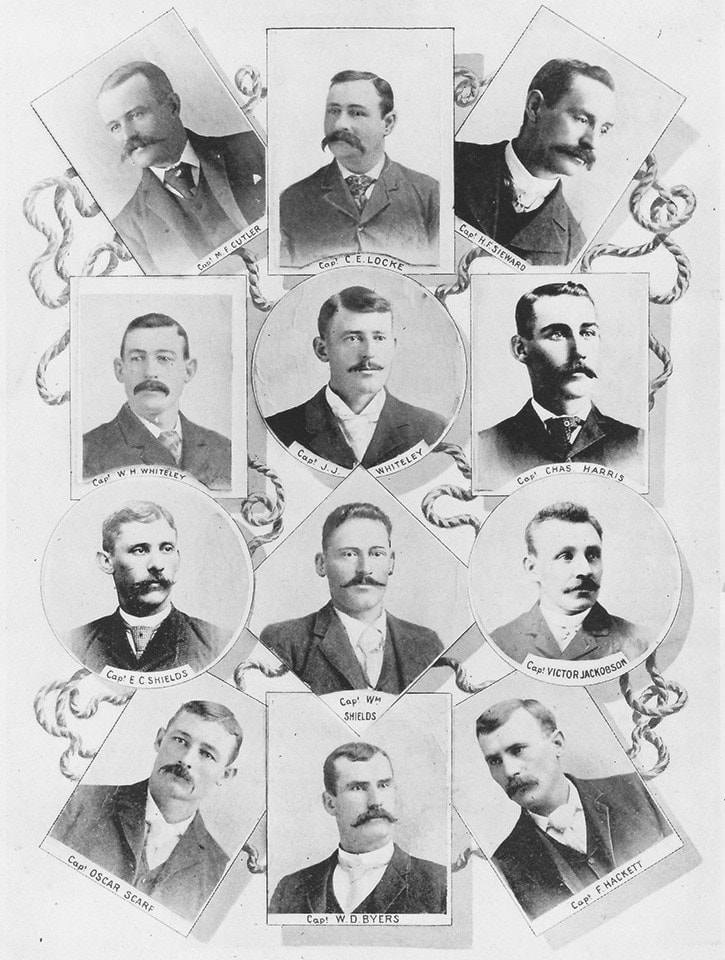One thing these sealing captains had in common, besides their livelihood, was their flourishing mustaches – perhaps it was the order of the day. The illustration of the 12 ships’ masters here is from Lewis and Dryden’s Marine History of the Pacific Northwest, published in 1895.
From the 1860s to 1911, when the industry was outlawed, the hunt for fur seals occupied many men on the West Coast of North America, who sailed as far west as Japan.
Whether it was immigrant mariners from European nations, the Far East or the Orient, or the local First Nations men who were employed as expert hunters, for almost half a century the sealing industry was one of the greatest sources of livelihood in the North Pacific.
All the mariners pictured were well-known, though not all sailed out of Victoria, and likewise, other ships’ masters, equally well-known here, were not included in this collage.
At top left is Captain M. F. Cutler, who was master of the Agnes McDonald, and was a brother to the Edward Cutler who built the 17 Mile House. Next is Captain C.E. Locke, who was master of the Brenda, and on the right, Captain H.F. Sieward, master of the Mascotte.
Second row, left, Captain W.H. Whiteley, master of Mermaid, then Captain J.J. Whiteley, master of Labrador. At right is Captain C.J. Harris, one time master of the May Belle. Left on the third row is Captain Ed Sheilds; married to Louise Charters, he was the father of Sooke’s well-loved blacksmith, Lyall Sheilds. Onetime master of the Mary Taylor, Ed Sheilds was master of the May Belle when it went down with all hands in the late 1890s. His brother, Capt. William Sheilds, master of the Vera, retired to a farm on Phillips Road that was later run by Rex Kendrew. Capt. Victor Jakobson, master of the Minnie, is on the right.
On the bottom row, left, is our well-known Capt. Oscar Scarf (think Scarf House on Otter Point Road) who sailed as a sealer but was best known as master on Dunsmuir vessels, including the tugs Pilot and Lorne. Capt. W. D. Byers was master of the Carlotta G. Cox, and Captain F. Hackett, right, was master of the Libbie.
While the hunting of fur seals for their pelts is an almost-forgotten and buried part of our history, in its time, it provided a livelihood that enabled many men to build homes and raise their families, whether they were ships’ masters, mariners crew, or hunters. Another interesting report says that some of the sealing vessels were engaged in the opium trade as well.
